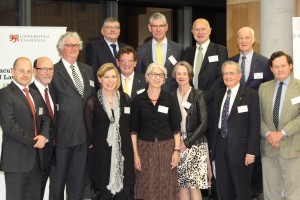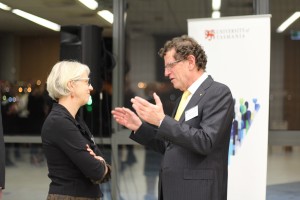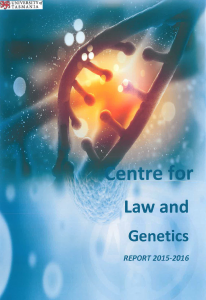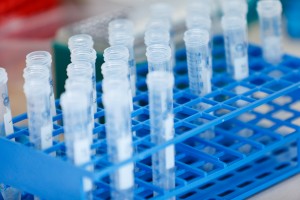World Immunisation Week
In relation to medical developments generally, the 24-30th of April signifies World Immunisation Week promoting protection of disease. Immunisation is one of the most significant medical research inventions of the last two centuries that has stopped the contraction and spread of a range of serious health conditions for example polio, small pox and more recently the human papillomavirus and chickenpox.
Millions of children in low and middle income countries die from preventable diseases; immunisation ‘considered essential for improving infant and drug survival.‘ (Arevshatian et al, 2007). In Australia, although there are good rates of immunisation, it is not only those in poor areas that do not immunise their children, as reported by the Age earlier this year despite it being critical to the health of the community.
National DNA Day (US)
The 25th of April in the US is National DNA Day ‘Celebrating Genomics Through Awareness’ and of course, is the same day in 1953 when scientists first published on the double helix structure of DNA. More recently, on that day in 2003, the Human Genome Project completion was announced. These two important discoveries are key foundations to our knowledge of genetics and the human genome. Although our understanding has greatly increased since the 1950s, there is still so much about the human genome that we don’t know, and that may help or even answer important questions about life.
Still thinking about DNA? Consider a PhD in genetics at the Menzies, University of Tasmania or in social, legal and ethical implications of genetic research with the CLG…
World Intellectual Property Day
For people like the CLG Director, Dianne Nicol, it would be difficult to choose between DNA and intellectual property (IP), but luckily there’s a day for both. The 26th of April is World Intellectual Property Day to learn about the role that intellectual property rights play in encouraging innovation and creativity. In 2016, the theme is the future of culture in the digital age. The CLG’s intellectual property project on 3d Printing, aligns with many of the focus of this year – to consider how a balanced system can support the creative sector, in the modern digital world. The issues that arise with 3d printing are a key interest of CLG researcher Jane Nielsen as well as the director.
IP Australia provides resources for understanding IP and the different IP rights that exist, and also provides links where you can search the public databases of Australian Patents if there is something particular that you are looking for.
 7 April in Hobart, the President of the Australian Academy of Law Kevin Lindgren welcomed six new Tasmanian fellows to the Academy. The University of Tasmania, Faculty of Law was well represented with Professor Gino Dal Pont along with both the director and co-deputy director of the CLG, Professor Di
7 April in Hobart, the President of the Australian Academy of Law Kevin Lindgren welcomed six new Tasmanian fellows to the Academy. The University of Tasmania, Faculty of Law was well represented with Professor Gino Dal Pont along with both the director and co-deputy director of the CLG, Professor Di 
 Nicol and Professor Margaret Otlowski, all elected as fellows. They join Professor Don Chalmers as CLG members who have been granted the honour. In recognition of the occasion, the Patron of the Academy, the Honourable Robert French Chief Justice of the High Court of Australia presented an address on “Rationality and Reasonableness” to an audience of judges, magistrates, members of the legal profession, academics and law students.
Nicol and Professor Margaret Otlowski, all elected as fellows. They join Professor Don Chalmers as CLG members who have been granted the honour. In recognition of the occasion, the Patron of the Academy, the Honourable Robert French Chief Justice of the High Court of Australia presented an address on “Rationality and Reasonableness” to an audience of judges, magistrates, members of the legal profession, academics and law students. 



 The US Patent and Trademarks Office (the USPTO) have publicly released their long-awaited Report to Congress on Confirmatory Genetic Diagnostic Test Activity. The USPTO was required to study a number of issues relating to confirmatory (or second opinion) genetic diagnostic testing pursuant to section 27 of the Leahy Smith America Invents Act, which was signed into law in 2011. Since then, two significant US Supreme Court decisions, Mayo Collaborative Services v. Prometheus Laboratories, Inc., 132 S. Ct. 1289 (2012) and Association for Molecular Pathology v. Myriad Genetics, Inc., 132 S.Ct. 1794 (2012), have changed the patent landscape relating to genetic diagnostic testing. This led the USPTO to conclude that ‘unless and until the legal environment shifts again, it is difficult to conceive of a gene-based diagnostic correlation that could be exclusively protected by a patented means of determining the correlation owned by a single provider’. Thus, these Supreme Court decisions have superseded whatever findings that the USPTO would have been able to make to Congress based on the limited evidence that was available to them. Looking to the future, the main restriction on consumer choice is likely be whether there is sufficient demand to support multiple providers in the diagnostic testing market. The USPTO urged Congress to continue to monitor this space, with particular focus on data sharing and the availability of insurance cover for gene-related diagnostic tests. (Posted by Dianne Nicol).
The US Patent and Trademarks Office (the USPTO) have publicly released their long-awaited Report to Congress on Confirmatory Genetic Diagnostic Test Activity. The USPTO was required to study a number of issues relating to confirmatory (or second opinion) genetic diagnostic testing pursuant to section 27 of the Leahy Smith America Invents Act, which was signed into law in 2011. Since then, two significant US Supreme Court decisions, Mayo Collaborative Services v. Prometheus Laboratories, Inc., 132 S. Ct. 1289 (2012) and Association for Molecular Pathology v. Myriad Genetics, Inc., 132 S.Ct. 1794 (2012), have changed the patent landscape relating to genetic diagnostic testing. This led the USPTO to conclude that ‘unless and until the legal environment shifts again, it is difficult to conceive of a gene-based diagnostic correlation that could be exclusively protected by a patented means of determining the correlation owned by a single provider’. Thus, these Supreme Court decisions have superseded whatever findings that the USPTO would have been able to make to Congress based on the limited evidence that was available to them. Looking to the future, the main restriction on consumer choice is likely be whether there is sufficient demand to support multiple providers in the diagnostic testing market. The USPTO urged Congress to continue to monitor this space, with particular focus on data sharing and the availability of insurance cover for gene-related diagnostic tests. (Posted by Dianne Nicol).